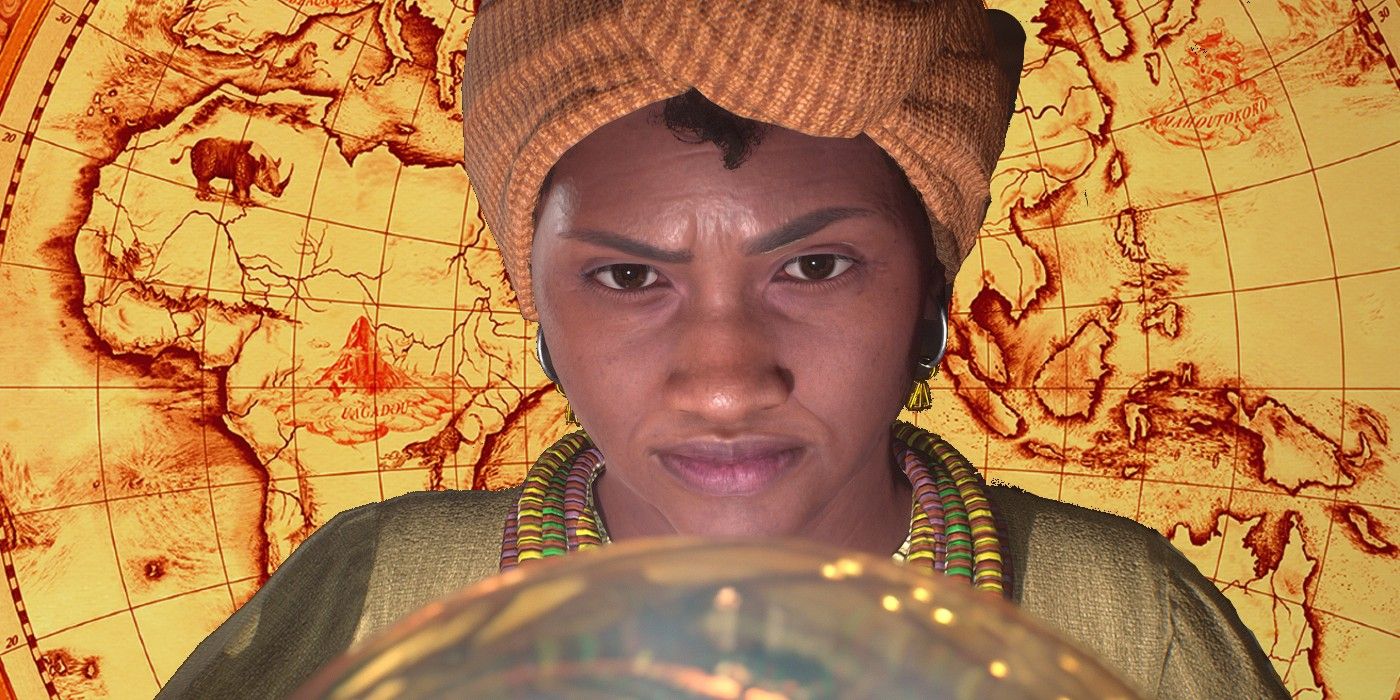The Harry Potter series is more expansive than many people can imagine, and beyond the walls of Hogwarts is the Wizarding World’s most groundbreaking school of magic. Across human history, in all cultures since records began, tales of sorcery, extraordinary creatures, and mythical traditions have been handed down over the centuries. Through the lens of magic, people have exchanged their culture, allowing them to recognize what they share while celebrating the enchanting elements that distinguish them. One of the most fascinating things about Harry Potter’s Wizarding World is that it simultaneously reflects the countless cultures and neglects them in favor of Hogwarts. Uagadou remains one of the most fascinating and mysterious schools of magic within Harry Potter’s canon, prompting greater questions about the world outside Hogwarts.Throughout the series, there have been allusions and speculations that Hogwarts School of Witchcraft and Wizardry wasn’t the only institution of magic. It wasn’t until J.K. Rowling’s 2000 book, Harry Potter and the Goblet of Fire – that readers got their first insightful glimpse into the broader Wizarding World. The book prominently featured France’s Beauxbatons Academy of Magic and the Northern European Durmstrang Institute for Magical Learning, sparking curiosity about unique wizarding communities globally. While additional glances into the magical world presented themselves in media, such as the video game Harry Potter: Quidditch World Cup and the book Quidditch Through the Ages, the greatest revelation came to fans around the release of Fantastic Beasts and Where to Find Them in 2016. Rowling shared the existence of 11 great Wizarding schools, including America’s Ilvermorny School of Witchcraft and Wizardry, Japan’s Mahoutokoro, and, of course, the largest school, Africa’s Uagadou.One of many African schools, Uagadou is the most prominent, dating back a thousand years at least. Descriptions depict the African school as carved into The Mountains of the Moon, found in Uganda and at the start of the Nile River. Surrounded by mist and creating an illusion of floating amidst eerie clouds as mist surrounds it, presumably, its location hides it from curious Muggles under the International Statute of Secrecy and Burkinabé Ministry of Magic. As one of the biggest wizarding schools in the world, Uagadou accepts children from across Africa, with others attending smaller schools throughout various territories. Unlike Hogwarts, which uses owls to deliver acceptance letters to young witches and wizards, Uagadou uses the unique medium of dream messaging, appearing to potential students as they sleep and leaving them with a carved stone token that acts as their invitation.
The Harry Potter series is more expansive than many people can imagine, and beyond the walls of Hogwarts is the Wizarding World’s most groundbreaking school of magic. Across human history, in all cultures since records began, tales of sorcery, extraordinary creatures, and mythical traditions have been handed down over the centuries. Through the lens of magic, people have exchanged their culture, allowing them to recognize what they share while celebrating the enchanting elements that distinguish them. One of the most fascinating things about Harry Potter’s Wizarding World is that it simultaneously reflects the countless cultures and neglects them in favor of Hogwarts. Uagadou remains one of the most fascinating and mysterious schools of magic within Harry Potter’s canon, prompting greater questions about the world outside Hogwarts.
Throughout the series, there have been allusions and speculations that Hogwarts School of Witchcraft and Wizardry wasn’t the only institution of magic. It wasn’t until J.K. Rowling’s 2000 book, Harry Potter and the Goblet of Fire – that readers got their first insightful glimpse into the broader Wizarding World. The book prominently featured France’s Beauxbatons Academy of Magic and the Northern European Durmstrang Institute for Magical Learning, sparking curiosity about unique wizarding communities globally. While additional glances into the magical world presented themselves in media, such as the video game Harry Potter: Quidditch World Cup and the book Quidditch Through the Ages, the greatest revelation came to fans around the release of Fantastic Beasts and Where to Find Them in 2016. Rowling shared the existence of 11 great Wizarding schools, including America’s Ilvermorny School of Witchcraft and Wizardry, Japan’s Mahoutokoro, and, of course, the largest school, Africa’s Uagadou.
One of many African schools, Uagadou is the most prominent, dating back a thousand years at least. Descriptions depict the African school as carved into The Mountains of the Moon, found in Uganda and at the start of the Nile River. Surrounded by mist and creating an illusion of floating amidst eerie clouds as mist surrounds it, presumably, its location hides it from curious Muggles under the International Statute of Secrecy and Burkinabé Ministry of Magic. As one of the biggest wizarding schools in the world, Uagadou accepts children from across Africa, with others attending smaller schools throughout various territories. Unlike Hogwarts, which uses owls to deliver acceptance letters to young witches and wizards, Uagadou uses the unique medium of dream messaging, appearing to potential students as they sleep and leaving them with a carved stone token that acts as their invitation.
#Wizarding #Worlds #Groundbreaking #School #Explained
Note:- (Not all news on the site expresses the point of view of the site, but we transmit this news automatically and translate it through programmatic technology on the site and not from a human editor. The content is auto-generated from a syndicated feed.))



